Last-Minute NYC Holiday Gift Guide 🎁
We’ve created a holiday gift guide with presents for the intrepid New Yorker that should arrive just in time—


One of Untapped New York’s exclusive tours is a visited inside the normally off-limits Bialystoker Synagogue on the Lower East Side. This landmarked building, which was built in 1826, encapsulates what we love about New York City – many layers of history, quirky details, and hidden places within a building you might just walk by and never notice.
10. Bialystoker Wasn’t Built As a Synagogue
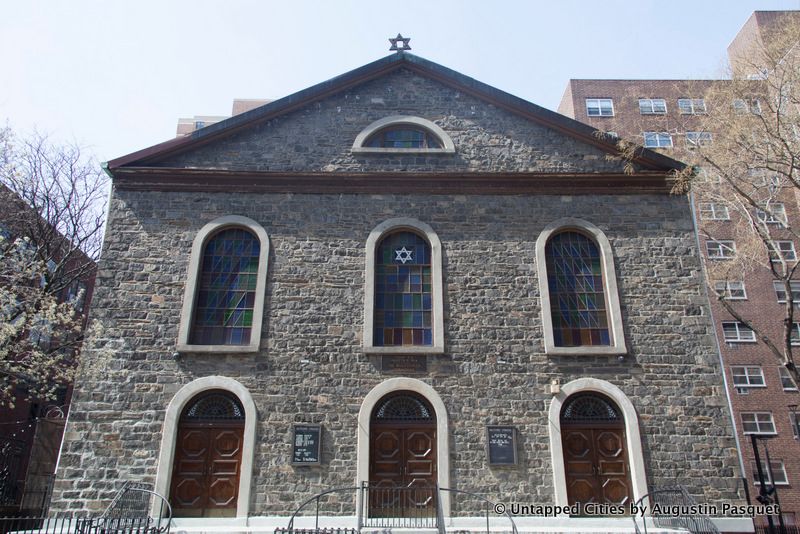
As you might guess from the Federal-style architecture of the Bialystoker Synagogue, it was not built as a Jewish house of worship. In fact, it was originally the Willet Street Episcopal Church, a congregation that served the new community rising on the former estate and orchards of James de Lancey, Jr., a Loyalist who lost his property holdings after the American Revolution. The Willet Street Episcopal Church was built in 1826, but changing demographics on the Lower East Side led to a steady decline in congregation size starting in the 1880s.
In 1905, the congregation Chevra Anshei Chesed of Bialystok, which was formed on the Lower East Side by Polish immigrants from the town of Bialystok in 1865, purchased the building for use as a synagogue.
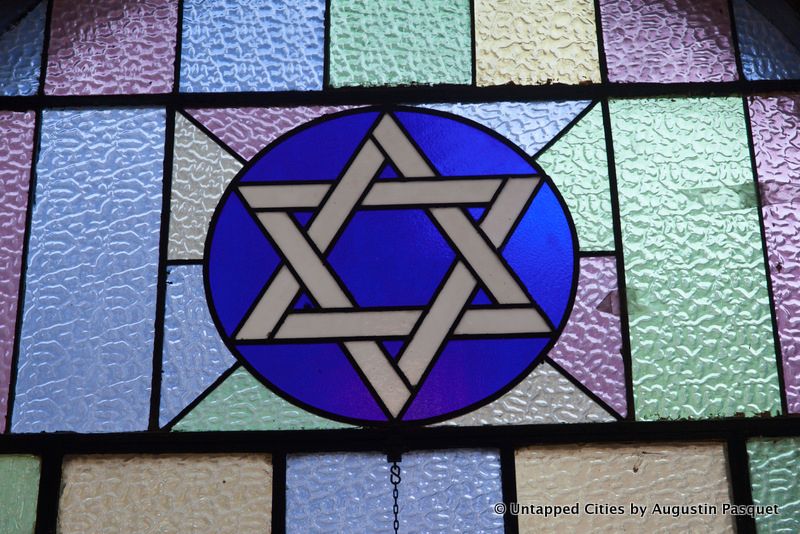
The Bialystoker Synagogue building, constructed in 1826, is a full 61 years older than the nearby Eldridge Street Synagogue, which was built in 1887. It is the oldest building used as a synagogue not only on the Lower East Side, but all of New York City.
Nonetheless, the conversion of churches into synagogues was not without controversy. As the Eldridge Street Synagogue reports on its website, “…when Jews were first moving to America, they had to seriously question whether or not the use of former churches complied with Rabbinic law. Once rabbinic authorities in Poland confirmed that there was nothing wrong with the Beth Hamedrash Hagodol congregation purchasing the Norfolk Street Baptist Church in 1885, the conversion of churches into synagogues became the norm.”
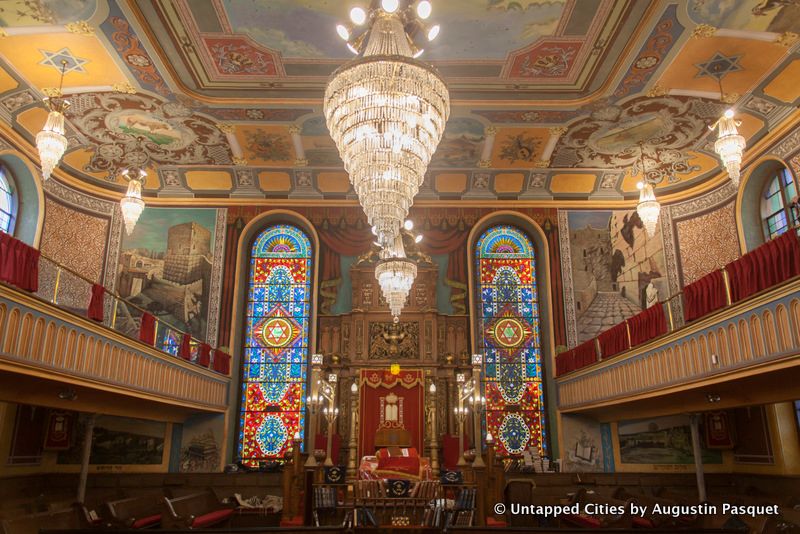
Manhattan’s bedrock (also known as schist) is one of its notable natural characteristics, appearing in places like Central Park and deep below Grand Central Terminal in its secret M42 basement. It has also been used in the construction of many buildings, like the City College of New York campus, whose Manhattan schist was excavated in the construction of the subway. The original Willet Street Episcopal Church, which became the Bailystoker Synagogue, was built of Manhattan schist or fieldstone quarried from Pitt Street, nearby. It is also one of just four surviving fieldstone buildings dating from the Federal period in New York City.
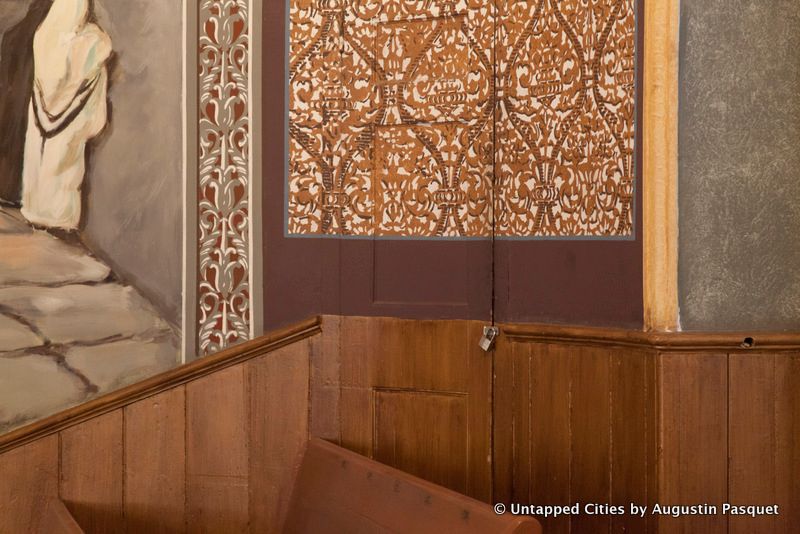
Part of the oral history passed down through the community is the role of the building as a site for the Underground Railroad. If you head to the corner of the women’s gallery of the synagogue today, there is a camouflaged door. Behind it is a narrow opening with a wooden ladder that heads up to an attic space. There is no written record of the Willet Street Episcopal Church as an Underground Railroad site, but that was likely a deliberate choice given the activity. During and before the Civil War, churches in New York City often served as sites on the Underground Railroad, including Plymouth Church and the Brotherhood Synagogue (formerly a Quaker meeting house) on Gramercy Park.
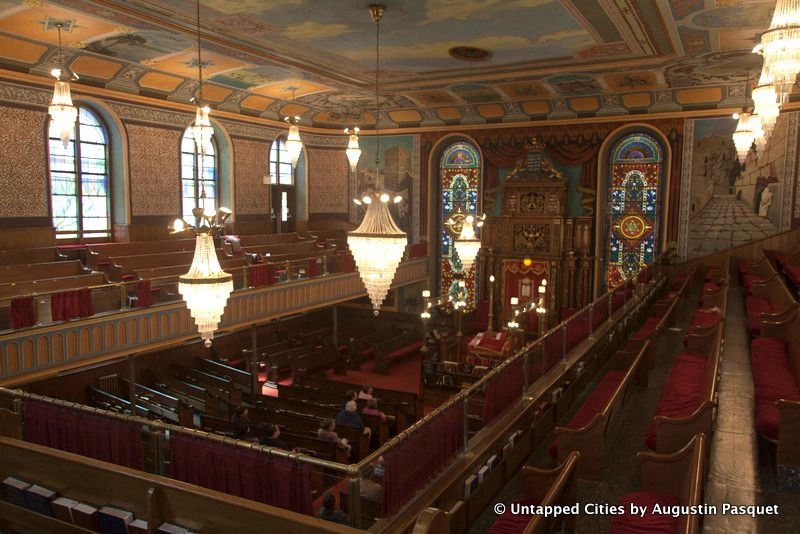
Like many churches in Lower Manhattan, the Willet Street Episcopal Church had an adjoining cemetery to bury members of its congregation. An 1851 ordinance from New York City banned burials below 85th Street and the church began to transfer bodies to Brooklyn’s Cypress Hills Cemetery in 1854. At first, the congregation was unaware that the tombstones were somewhat arbitrarily placed at the burial site. As Daytonian in Manhattan writes, “A reporter from the Brooklyn Daily Eagle interviewed a watchman at the plot who admitted that the ‘bones and coffins’ were buried in long trenches. Above, the headstones were nicely arranged–’put up to look good.'”
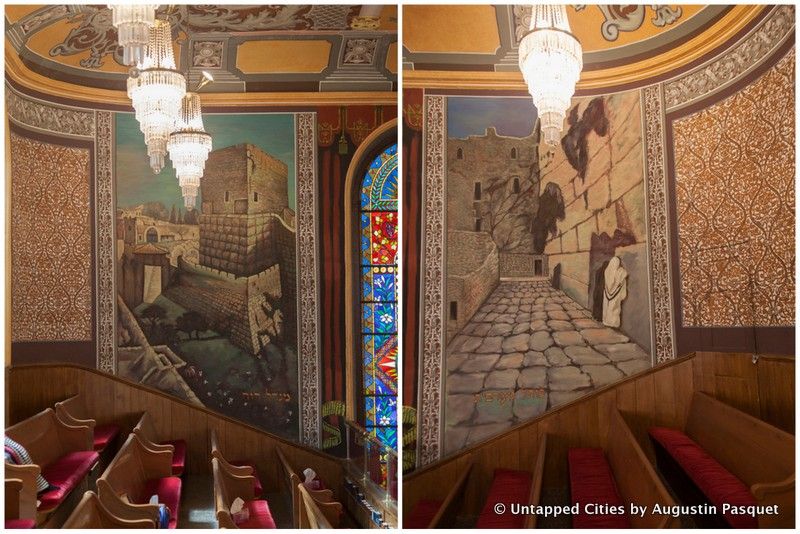
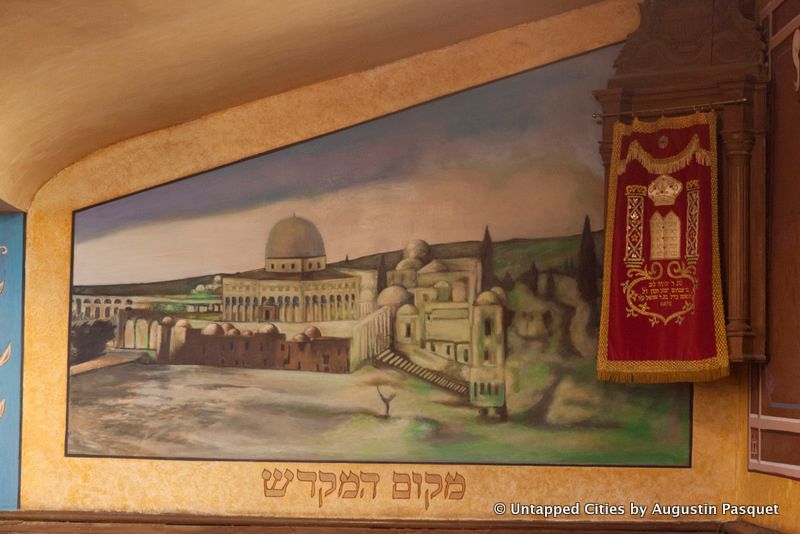
As a former church, the Bialystoker Synagogue was was not oriented to the east as synagogues traditionally are. Instead, the wall was painted with scenes from Jerusalem, including images of the Western Wall and Temple Mount, to create a symbolic facing of the East.
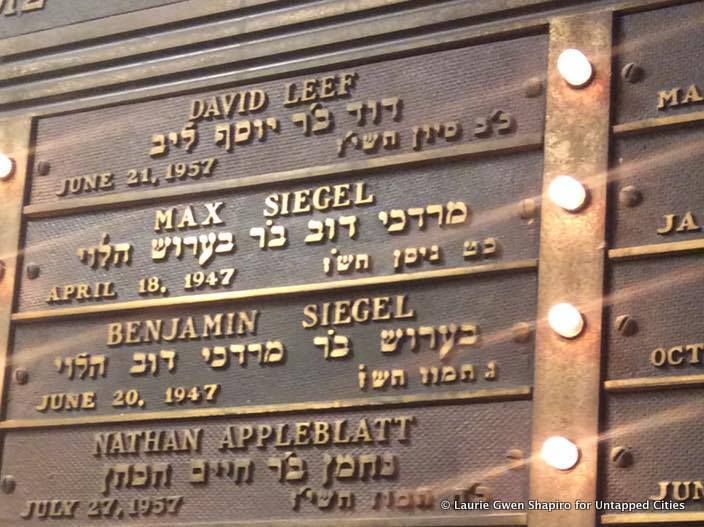
One of the most renowned and infamous Jewish mobsters was Bugsy Siegel, founder of Murder, Inc. and a major player in the creation of the Vegas. Something you might easily miss is a memorial plaque to Siegel, who was a member of the Bialystoker Synagogue, under his birth name Benjamin Siegel. The day he died, on June 20, 1947 in a shooting at his home in Beverly Hills, is on the plaque. As writer Laurie Gwen Shapiro noted on the tour, “Notice Bugsy’s light is ON.”
Bugsy’s plaque sits just below the plaque of his father. Our tour guide Lori Weisman from the Lower East Side Jewish Conservancy explains, “That’s honor among thieves,” allowing Bugsy enough time to mourn the death of his father before his own murder.
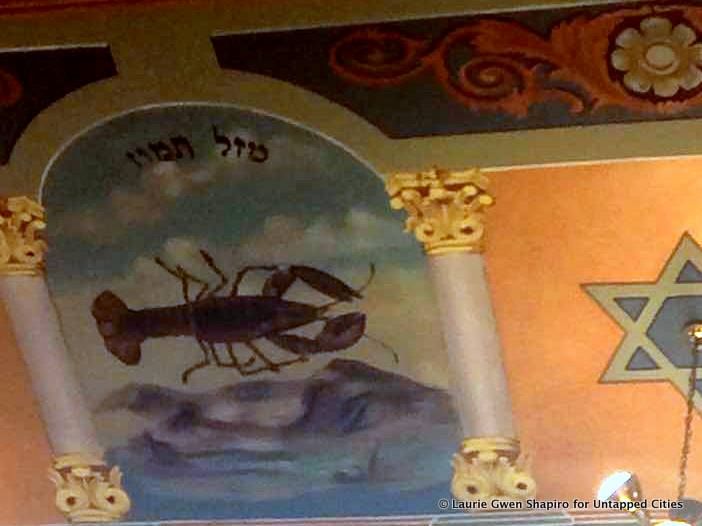
A guest on our last tour asked, “”What’s with the traif?” Traif means non-kosher food, and he was referencing the lobster on the ceiling mural. The paintings were hand done during the WPA era and the running theory is that the painter hired may not have been aware of the difference between a lobster and crab in terms of astrology. Astrological symbols are prominent in the decoration of the Bialystoker Synagogue.
As Dodi-Lee Hect
writes, “Clearly inscribed [at the Bialystoker Synagogue] are the Hebrew monthly equivalents of the astrological signs…It is fairly clear that the prominent presence of the zodiac in the decorations of the Bialystoker Synagogue is not an expression this congregation’s belief in astrology. Rather its place of honor reflects the importance given to the recurring seasons and holidays that link us to both our history and our daily observances.”
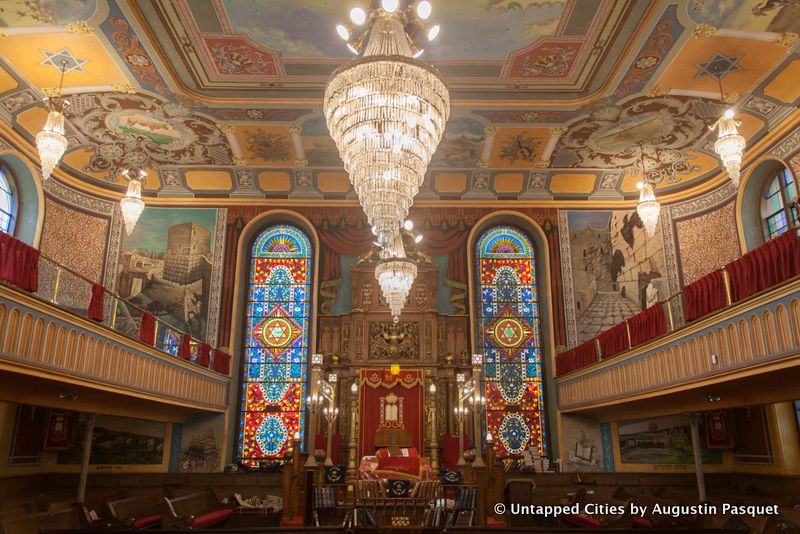
Despite the struggles during the Great Depression, the Bialystoker Synagogue decided to undertake a beautification program for the building during this era. According to the synagogue website, “During the Great Depression, a decision was made to beautify the main sanctuary, to provide a sense of hope and inspiration to the community.” The WPA-era Lobster mural comes from this time period.
Today 300 families still belong to the Bialystoker Synagogue, and it is one of only five active synagogues on the Lower East Side.
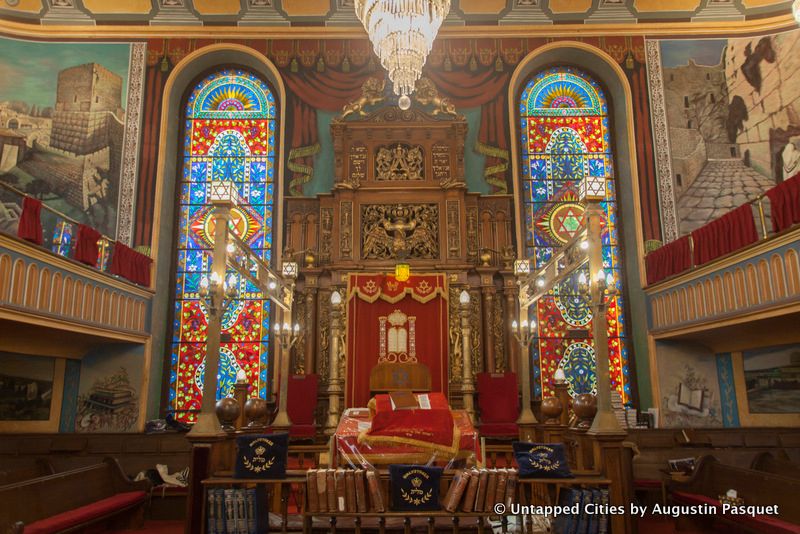
The Torah ark in Bialystoker Synagogue was made in Bialystok, Poland (then Russia), brought over to the United States and reassembled here. In a 1988 renovation, which included restoring the interior to its original state as a synagogue and restoring the exterior facade, the ark was highlighted in 18 karat gold. The synagogue states that its most recent restoration work has been on the stained glass windows.
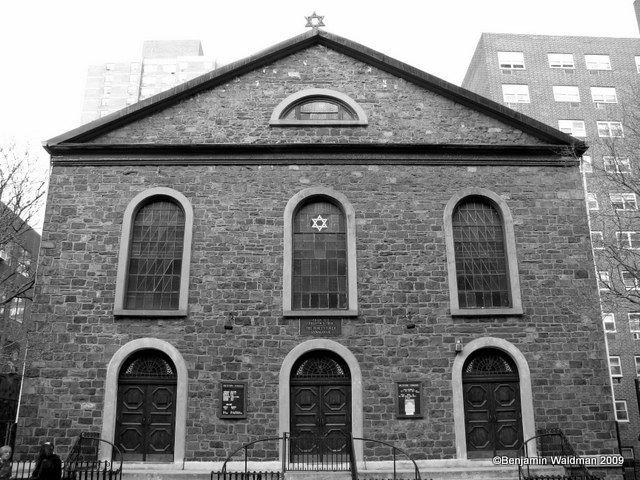
As the original church name suggests, the original street the church/synagogue sat on was Willet Street. This portion of the street was renamed Bialystoker Place, in honor of the synagogue.
Next, check out the secrets of the equally stunning Eldridge Street Synagogue
Subscribe to our newsletter